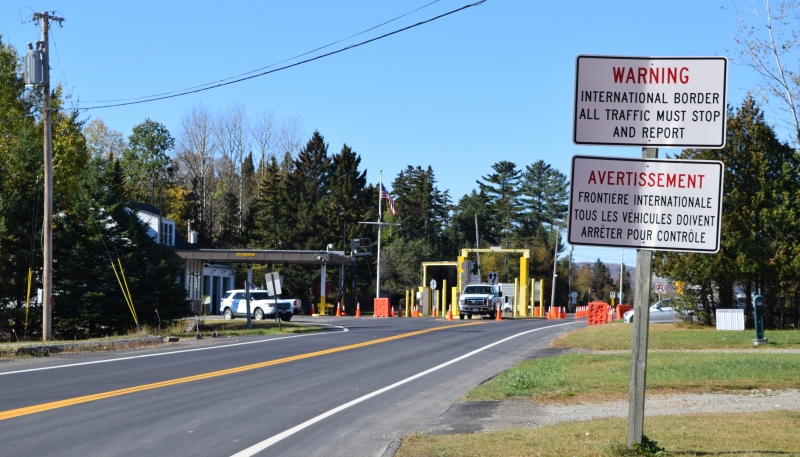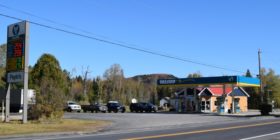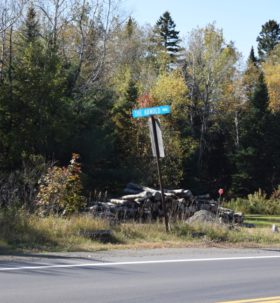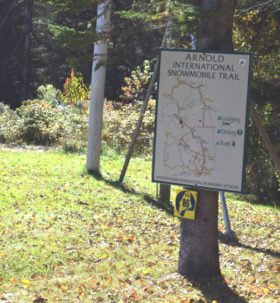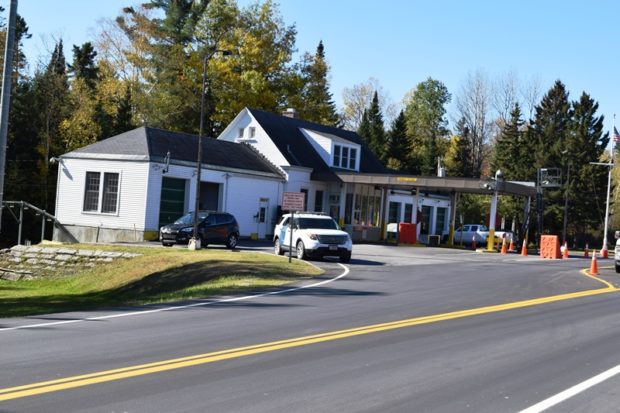This is a small unorganized township in Franklin County on the border with Canada. It has a very small village with few houses and one store. Logging trucks abound, both in the village and those traveling through from Canada, many with lumber. Without mountains, it does have three water bodies: Arnold Pond, Crosby Pond, and Upper Hathan Bog.
The land area between Chain of Ponds and Arnold Pond is where Benedict Arnold’s army abandoned their bateaux before crossing the “height of land” to the Canadian border. Maine Route 27 is also known as the “Arnold Trail.”
National Register of Historic Places – Listings
U.S. Inspection Station
The U.S. Inspection Station retains important historic characteristic elements, including the two detached residences, and demonstrates the historic characteristics of Border Stations that were built pursuant to a 1928 federal policy.
By the 1920s motor vehicles became more reliable and their ownership, popularity, and total miles traveled increased steadily. Roads and highways were improved to meet the increased need, including those that crossed the international borders with Canada and Mexico. Previously illegal crossings at international land borders were relatively rare. In 1917 and 1921, however, immigration laws were tightened and the imposition of head taxes and quotas resulted in an increase in the number of illegal alien land border crossings. In 1919, prohibition laws increased the smuggling of alcohol and other illegal goods across land borders.
The U.S. Border Stations built soon after 1928 are considered significant as properties planned and designed by the U.S. government in response to the greatly increased volume of motor vehicles crossing land borders, and the resulting need to adequately enforce the nation’s customs and immigration laws. Until the 1920s, goods and people primarily entered the United States at sea, lake or river ports. At land points of entry, customs and immigration officials were housed in government buildings built primarily for a different function. By the 1920s, motor vehicles became more reliable and their ownership, popularity, and total miles traveled increased steadily. Roads and highways were improved to meet the increased need, including those that crossed the international borders with Canada and Mexico.
Previously illegal crossings at international land borders were relatively rare. But in 1917 and 1921, immigration laws were tightened and of head taxes and quotas resulted in an increase in the number of illegal land border crossings. In 1919, prohibition laws increased the smuggling of alcohol and other illegal goods across land borders. The Coburn Gore station is one of 48 replacement structures. This one also included living quarters for the staff.
Additional resources
Maine. Historic Preservation Commission. Augusta, Me. Text and photos from National Register of Historic Places: http://pdfhost.focus.nps.gov/docs/nrhp/text/14000558.PDF and http://pdfhost.focus.nps.gov/docs/nrhp/photos/14000558.PDF
Western Mountains Corporation. “Proposed Coburn Gore to Kingfield Trail Presented to Maine Bureau of Parks and Lands.” August 28, 2013. https://www1.maine.gov/dacf/parks/get_involved/planning_and_acquisition/management_pland/flagstaff_region/docs/coburn_gore_to_kingfield_trail_proposal.pdf
The Township has three small water bodies: Arnold Pond, Crosby Pond, and Upper Hathan Bog.


